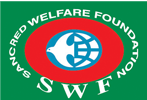INTEGRATED COMMUNITY DEVELOPMENT PROJECT (ICDP) PHASE - III
Donor: Normisjon, Norway and own contribution
Project period: January 2017-December 2019
Goal of the Project
The goal of the project is to achieve secured livelihood, health, education for the poor and marginalized people of Sunamgonj, ensure environmental sustainability of the area and a more equitable society.
Project Objectives
- Active, economically-viable and sustainable community-based organizations, representing the poor and marginalized people of Sunamganj, help communities to hold local government accountable and ensure access to existing governmental and private service deliveries.
- Marginalized communities are skilled and capacitated in livelihood security, increasing earning from agricultural and non-agricultural products, coping with natural calamities, and have access to quality medical services at an affordable cost.
- Target communities are aware and sensitized on gender justice and human rights, actively working to reduce gender-based violence and human rights violations in the project area.
Project Components
Three major Components to be achieved to contribute to the project objectives:
Component 1: Community Capacity Enhancement
Component 2: Livelihood Security, environmental sustainability and medical services
Component 3: Gender justice and Human Rights
The above-mentioned components are designed to be more congruent with the goal, objectives and role of the SWF. These are also congruent with the main strategy. The MTE and Final Evaluation recommendations were considered to formulate the components. However, as it is the second phase of the project, the previous activities remained similar under the reframed templates.
Result: The most important results have been achieved during the project period 2017-2019 as bellow:
- Marginalized community peoples are united in a particular government registered platform with a common view to establish equitable society, they are aware enough; and earned ability to make public representatives and duty bearers sensitized on their rights and rise voices in claiming their rights.
- Local farmers of disaster-prone areas adopted with different early varieties hybrid agricultural crops and increased productions without facing unexpected damages. They are also interested more in producing and applying biological fertilizer instead of chemical ingredients in their agricultural land especially in vegetable cultivation.
- PO people gained capacity to build an effective linkage with different local service providing agencies which leads them to avail services, facilities and other entitlements. In 2018, 802 poor PO members were enlisted to have government services, facilities and other entitlements by the local government institutions and received entitled services more or less. Moreover these; a significant number of PO members were included into service packages providing by different private agencies.
- Awareness level has been creating among the community people to receive modern medical services; peoples are more interested to have services from skilled and trained service health providers instead of unskilled and traditional quacks. Ultimately it contributes to reduce sufferings of them.
- Women and girls’ mobility in the community is visibly improved. They are now aware of their rights; they can now move out from their four walls of lives without facing deadly barriers. They have collectively undertaken important measures involving community leaders to stop and minimize child marriages; polygamy and illegal divorce as well as domestic violence against women and girls in the community.
- Government officials, public representatives, local elites, and CSOs are sensitized and participated in different events with PO members. So, a cohesive functional relationship among these stakeholders has been developed which will be helpful to continue social development activities after the project support has been phased out.
